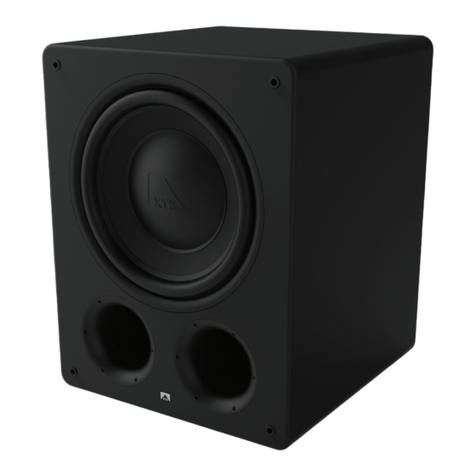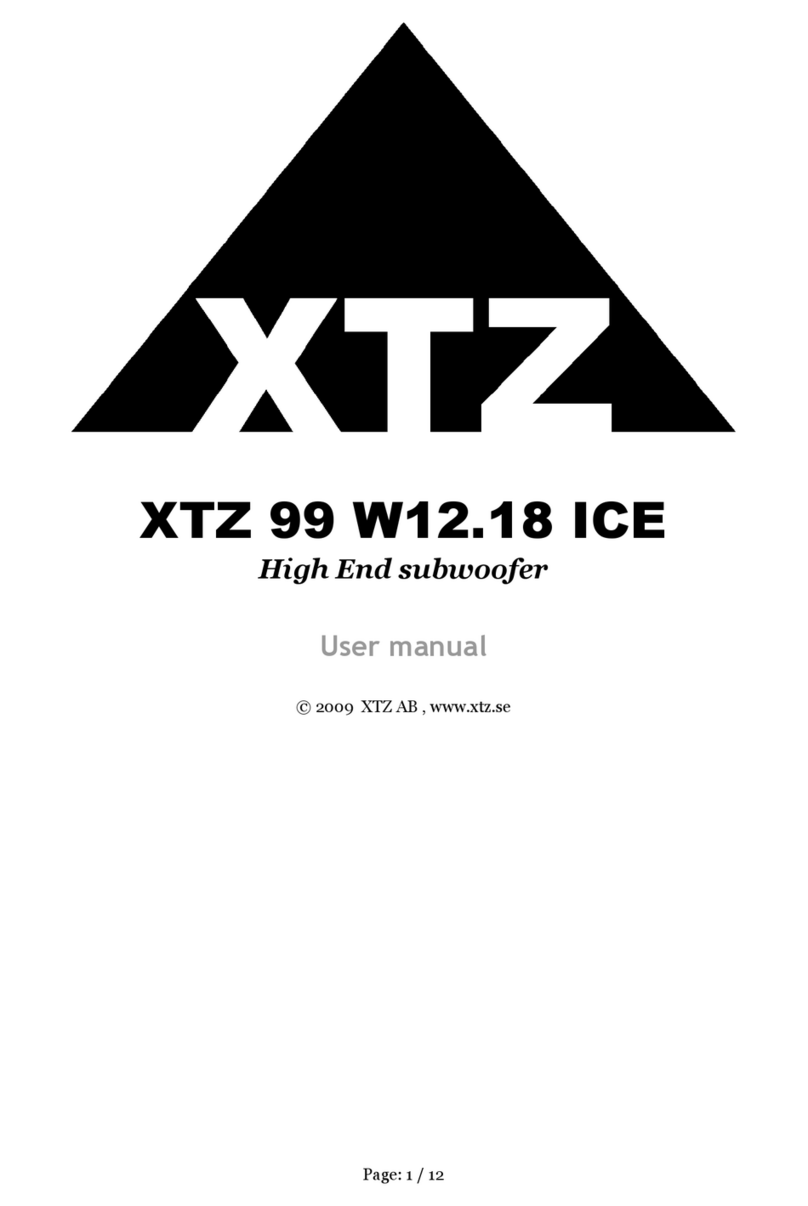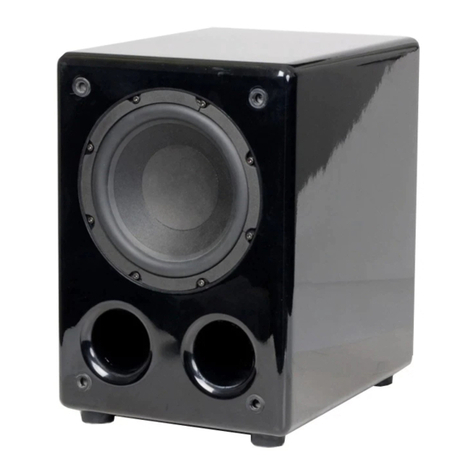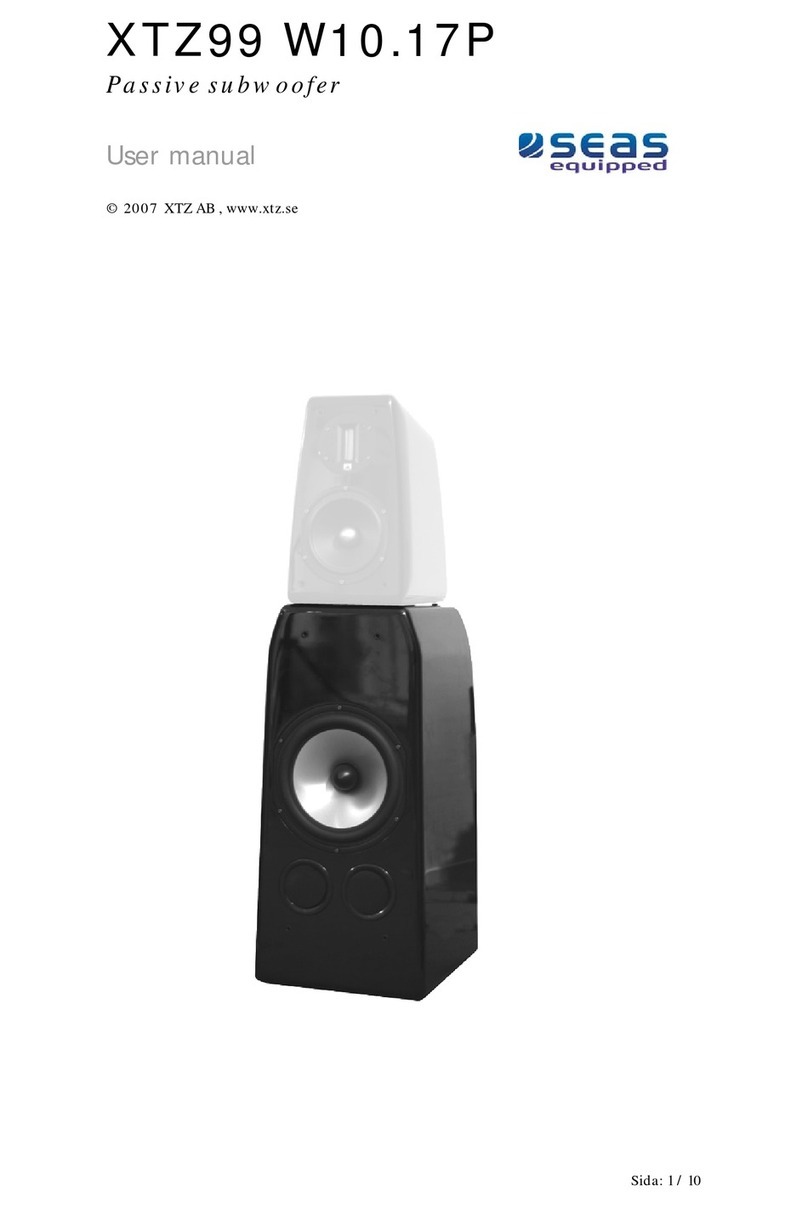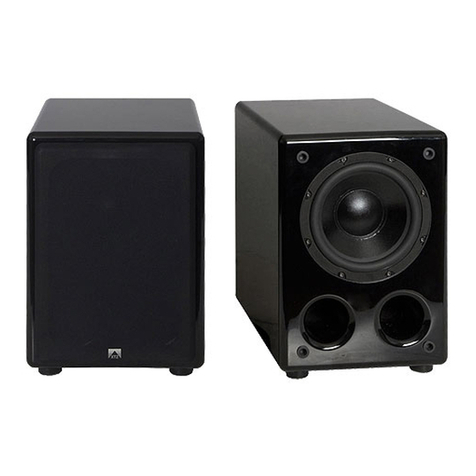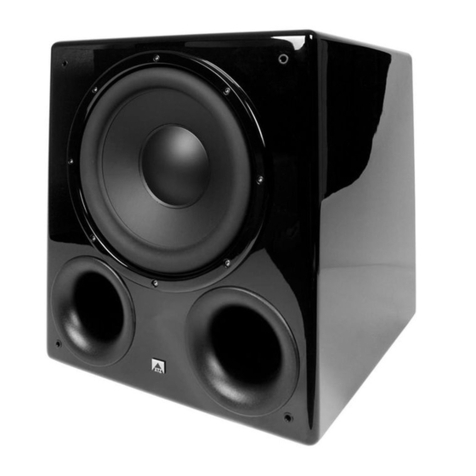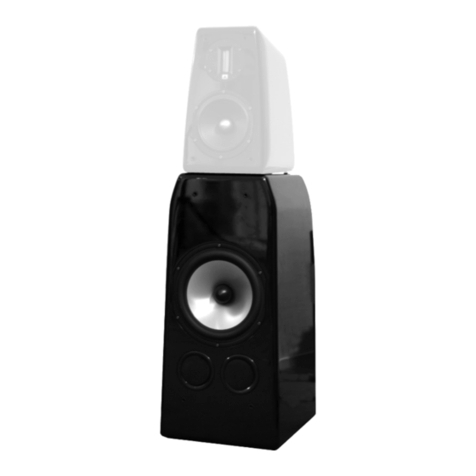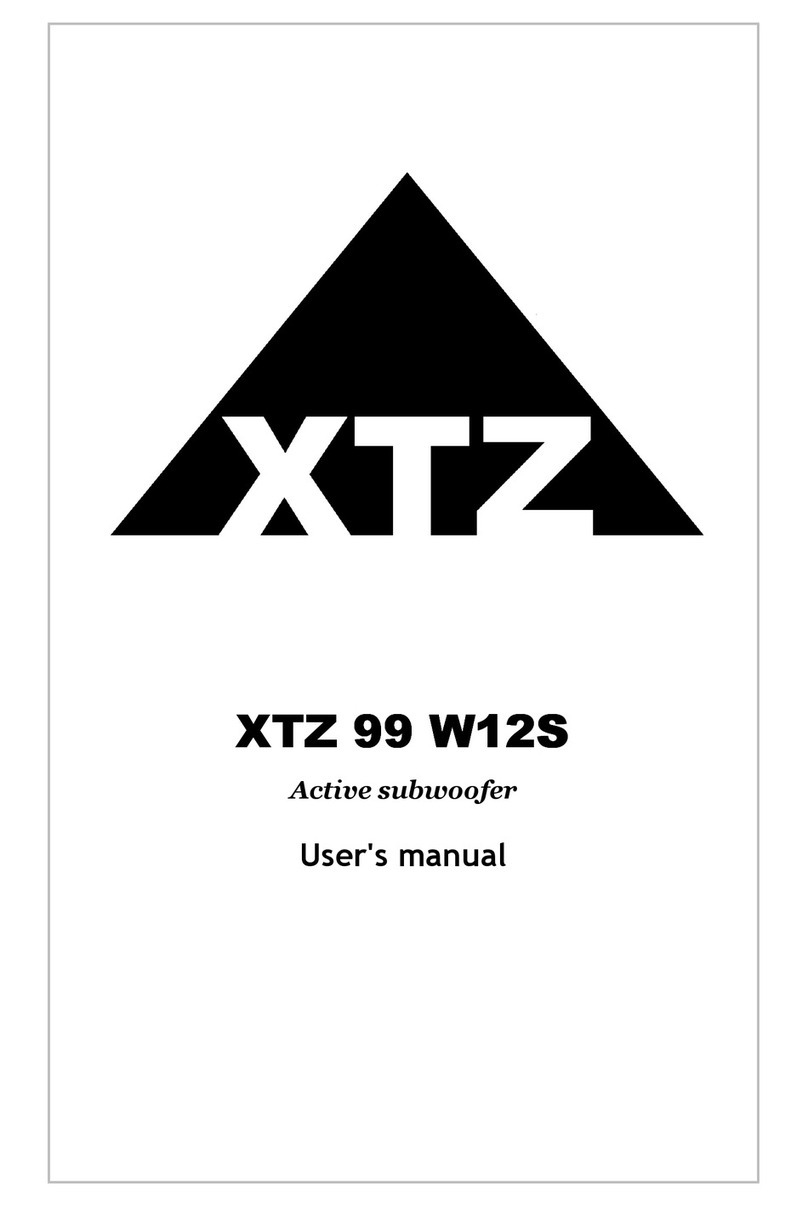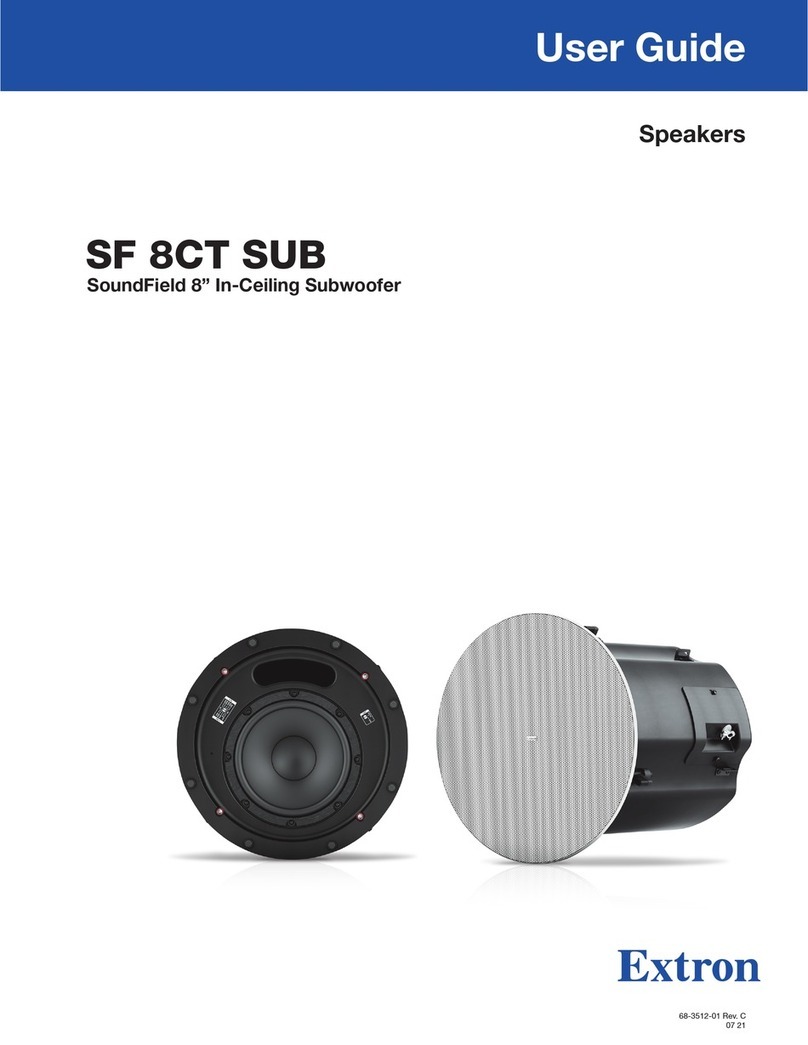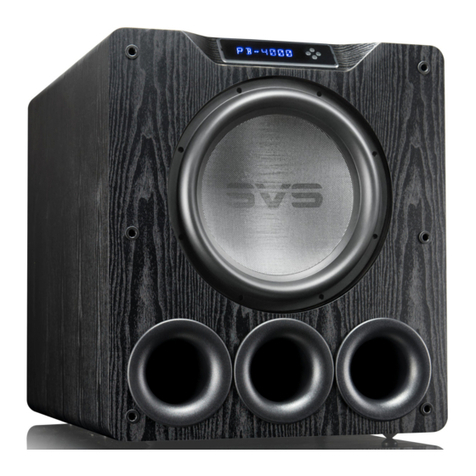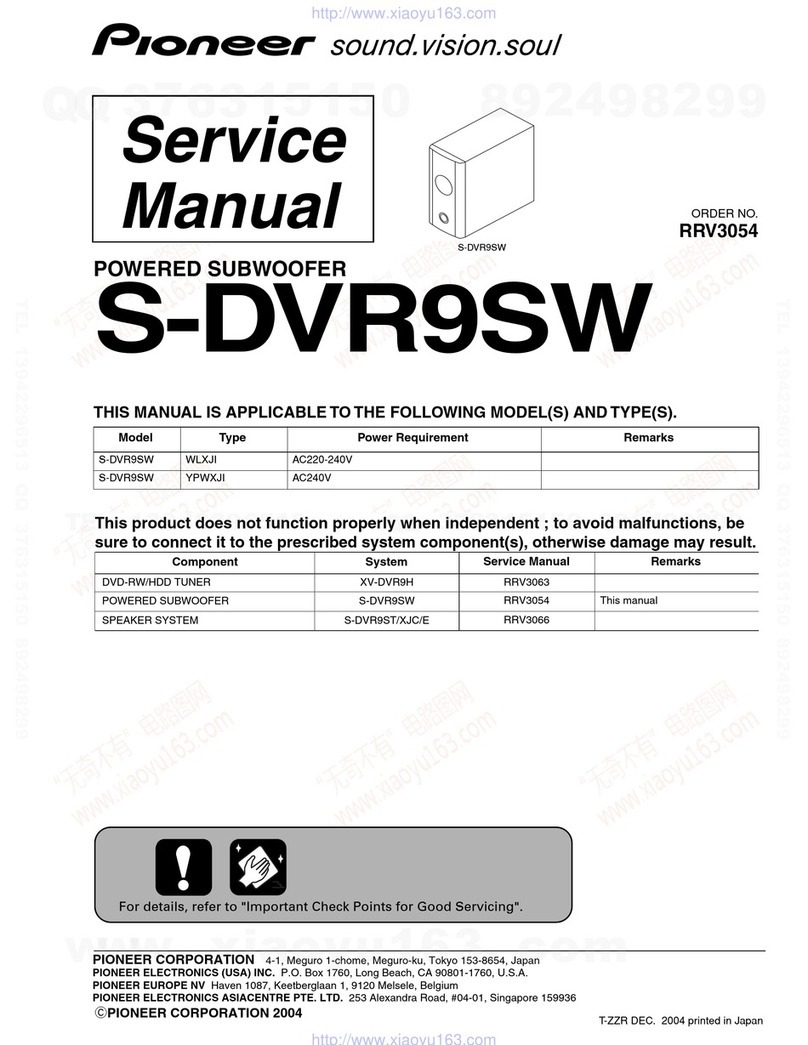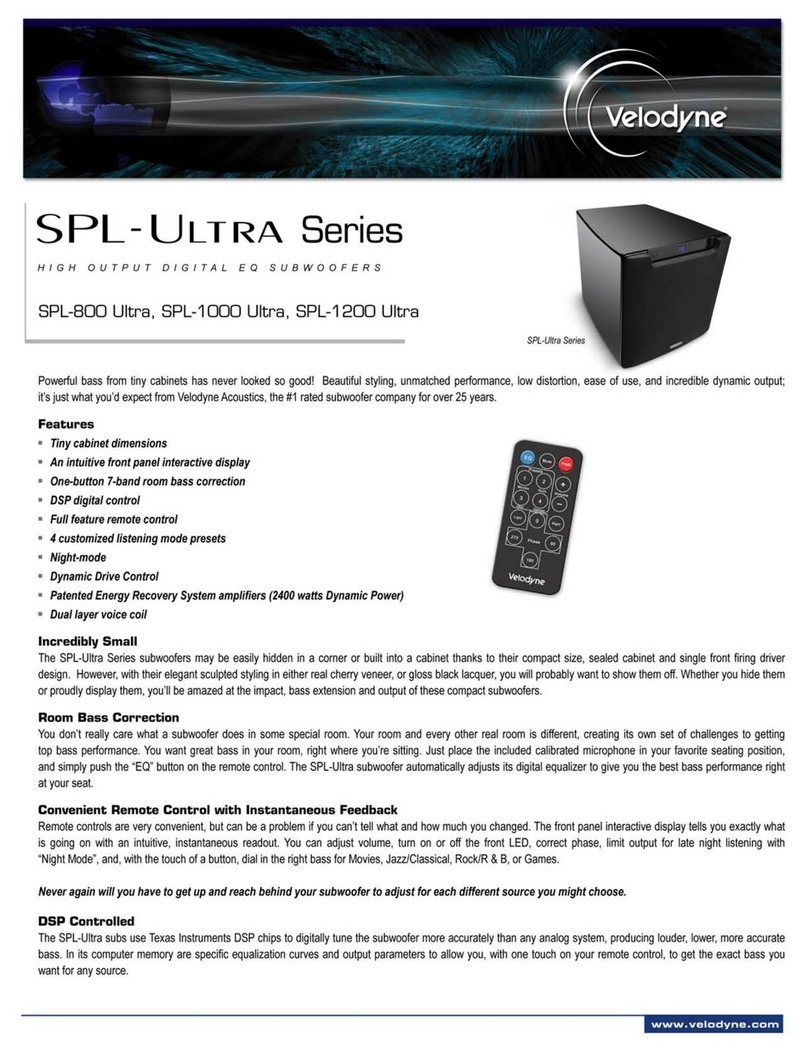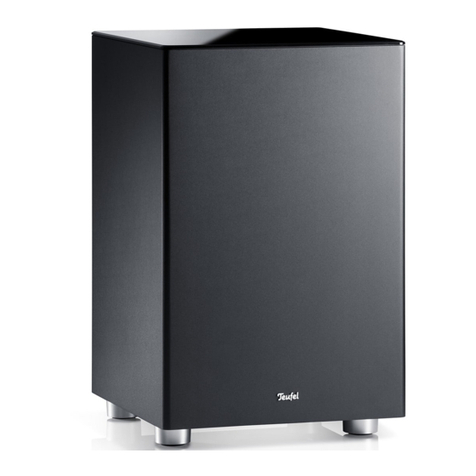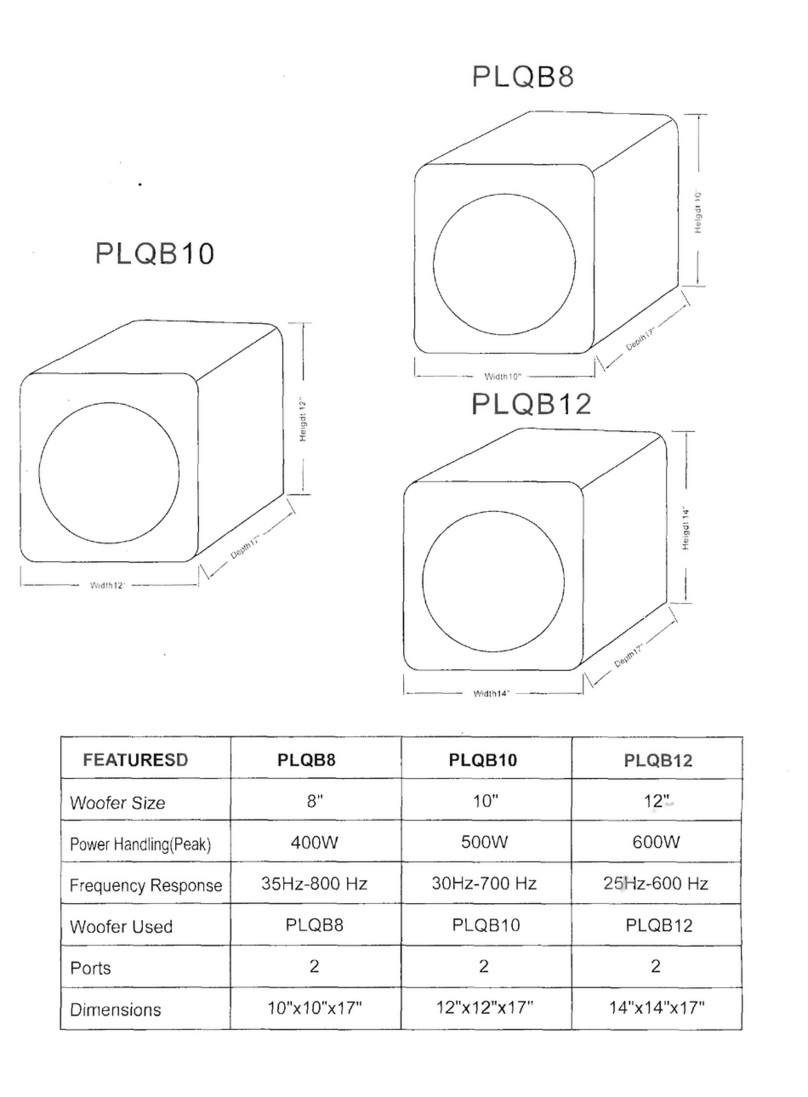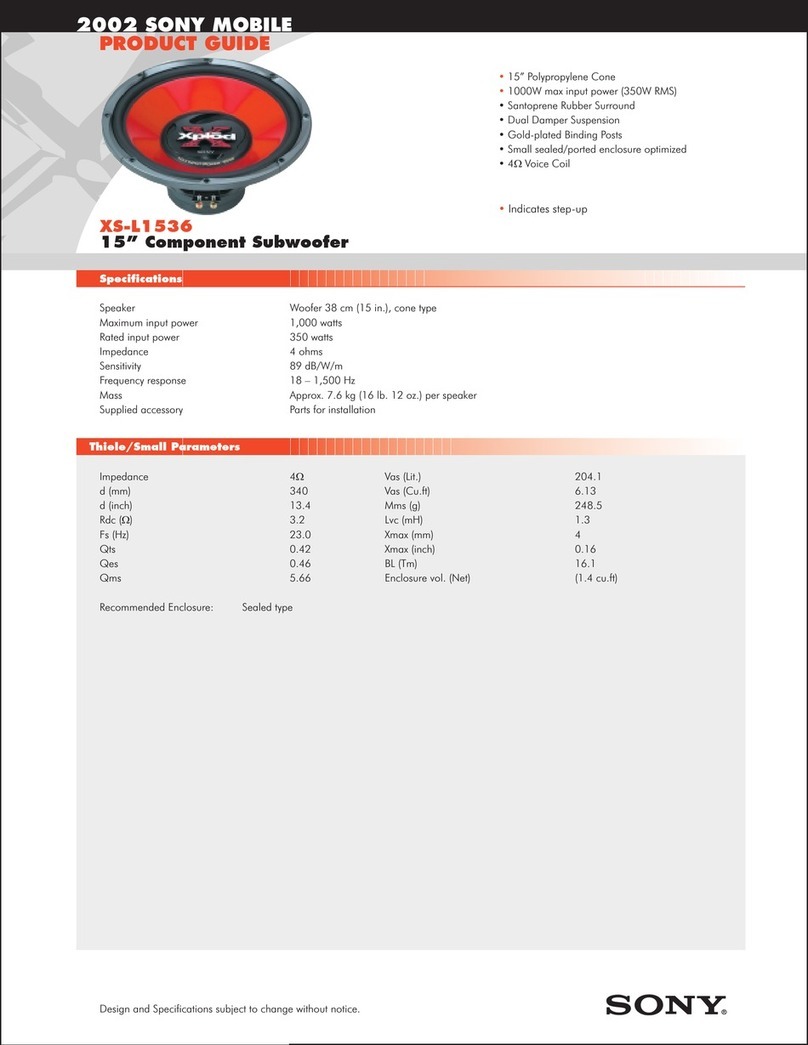
3
• Please read these operating instructions carefully and keep
them for reference.
• XTZ cannot be held liable for any damage resulting from
non-compliance with the following instructions.
• Choose a level, dry and clean place for your speakers, away
from windows with direct sunlight, heat sources, vibrations,
high humidity and extreme cold.
• Never open the housing. Contact our free of charge support in
the event of problems or defects.
• To prevent damage, your subwoofer may only be operated
with the voltage specied on the nameplate.
• To avoid the risk of re and the possibility of an electric
shock, the subwoofer may not be exposed to rain or high air
humidity (> 70%).
• Do not use force on the operating elements, connections or
cables. Disconnect the power cable and connection cables to
other equipment before shifting to another place. Always pull
the plugs and not the cables. Never touch the power cable
with wet hands.
• To protect the high-level stages of the subwoofer from over-
heating, a minimum space of 5 cm from walls and furniture
must be observed when setting up the equipment. Avoid heat
accumulation and do not cover your subwoofer with curtains,
tablecloths etc.
• To avoid image interference, ensure that there is sufcient
space (min. 1 m) between the subwoofer and the TV (tube
TVs only).
• Do not place your subwoofer close to heat sources or open
flames (e.g. candles). Please disconnect the subwoofer from
the mains when not in use for longer periods, during thunder
storms or in the event of flooding.
• Do not place any objects on the subwoofer housing or bass
reflex opening. Oscillations and vibrations can damage them.
• Do not insert any objects or body parts into the subwoof-
er opening. Live components inside the housing could get
touched and damaged. This can lead to short circuiting, elec-
tric shocks and re.
• Turn down the volume immediately if sound distortions, such
as unnatural knocking, beating or high-frequency clicking
can be heard.
• Do not use any chemical solutions to clean the equipment.
Use a clean, dry cloth.
• If exposed to severe temperature fluctuations, condensation
(water drops) can form inside the speaker. In this case, wait
for at least 2 hours until the moisture has evaporated before
putting the equipment into operation.
• The power plug must always be accessible so that it can be
removed in an emergency!
• The correct setup and connection of the subwoofer are the
responsibility of the user. XTZ will not accept any respon-
sibility for damage or injuries caused by incorrect setup or
faulty connection.
Important Notes

